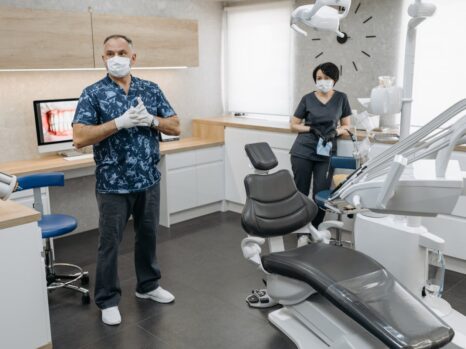Tooth extraction might seem daunting, but it is a routine dental procedure. It plays a vital role in maintaining oral health, especially when it comes to tackling severe tooth decay, crowding, and other dental complications. In this article, we delve deeper into the nuances of tooth extraction, its reasons, aftermath, and the impact it has on oral health.
What Is a Tooth Extraction
Tooth extraction, as the name suggests, implies the removal of a tooth from its socket in the bone. This procedure is typically performed by oral surgeons who specialize in surgical processes involving the mouth, jaw, and facial regions.
What Are Some Reasons for Tooth Extraction?
The reasons for tooth extraction may vary widely. However, the most common ones include severe tooth decay that’s irreparable, an impacted tooth stuck in the jawbone, or a fractured tooth beyond repair. Extraction might also be the go-to solution for crowded teeth when there isn’t enough space in the jaw for all the teeth to fit properly.
Often, part of comprehensive dental care includes oral surgeries like tooth extraction. One reliable avenue for this is a specialist like the affordable dentist in Tracy, who provides services from preventive care to oral surgeries.
Tooth Damage
The decision to extract a tooth also largely depends on the extent and type of damage the tooth has undergone. Tooth damage and extraction decisions can be influenced by conditions such as tooth luxation and severe dental injuries resulting from accidents.
Severe Gum Disease
Severe gum disease can also necessitate tooth extraction. Gum disease, if left untreated, can affect the tissues and bones holding the teeth in place, loosening them and making extraction the only viable solution.
When it comes to emergency dental care, tooth extraction can be a crucial service. In urgent scenarios, services like the fast emergency dentist in Tracy, CA, can handle everything from treating acute oral infections to performing emergency extractions.
Dental Solutions Vs. Tooth Extraction
Dental solutions like fillings, crowns, or root canals often prevent the need for tooth extraction. However, in extreme cases, extraction becomes unavoidable.
Dental Fillings Vs. Tooth Extraction
Dental fillings are a common method to repair decayed teeth, but when decay extends to the nerve or the tooth’s pulp, the damage is too severe, and extraction might be the only option.
Dental Crowns Vs. Tooth Extraction
Dental crowns are used to cover a tooth to restore its shape, size, and strength and improve its appearance. While usually used after a root canal treatment, severe decay or damage may leave no option but an extraction.
For those fearful of tooth removal, you should consider services like Miller’s expert tooth removal. They ensure a comfortable and pain-free extraction process.
Procedure of Tooth Extraction and Recovery Process
The procedure for tooth extraction is relatively straightforward and followed by a recovery process optimized for reducing discomfort and promoting healing.
Tooth Extraction
Depending on the case, tooth extraction might be simple or involve surgery. The complexity of the procedure relates to whether the tooth is visible or impacted (not yet broken through the gum’s surface).
Dental Sedation Options
Dental sedation options for tooth extraction can range from nitrous oxide (laughing gas), oral conscious sedation, and intravenous (IV) sedation to general anesthesia. The type of sedation provided would depend on the patient’s comfort level and the complexity of the extraction.
Post-Extraction Recovery and Aftercare
The recovery period for tooth extractions typically lasts a few days. Dental aftercare often involves instructions to limit certain activities and consumption, allowing the wound to heal optimally.
Symptoms and Complications After Tooth Extraction
Post-extraction, it’s common to experience discomfort and inflammation. However, if you experience severe pain, excessive bleeding, or fever, it’s recommended to seek medical attention immediately, as these symptoms might indicate complications of tooth extraction.
Replacement Options After Tooth Extraction
Post-tooth extraction, there are several replacement options available to fill the left void. Dental implants, bridges, and partial dentures are often prioritized.
Tooth Extraction Impact on Oral Health
Tooth extraction has both immediate and long-term implications on oral health. Immediately following the procedure, alleviating discomfort and managing symptoms is essential. In the long term, maintaining optimal oral health necessitates replacing the extracted tooth and continuing with a robust oral care routine.
Canceling Tooth Extraction Side Effects
Side effects post-tooth extraction typically involve swelling, mild discomfort, and residual bleeding. However, these symptoms usually subside after a few days.
Tooth Extraction Healing Process
The tooth extraction healing process includes timely clot formation, controlled healing of the extraction area, and, eventually, the growth of new bone in the extraction site with subsequent jawbone healing.
Pain Management After Tooth Extraction
Pain management is integral to the post-procedure regimen and is often managed effectively with prescribed or over-the-counter pain medication after tooth extraction.
Conclusion
Tooth extraction is a common dental procedure used in several circumstances, such as severe decay, crowding, or tooth damage. Though it can initially present discomfort, the long-term benefits for oral health are invaluable. Comprehensive aftercare and dental replacements post-extraction ensure the maintenance of oral health and aesthetics.
Seeking professional services from trusted dentists can ensure a smooth and efficient tooth extraction and recovery process.




















